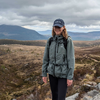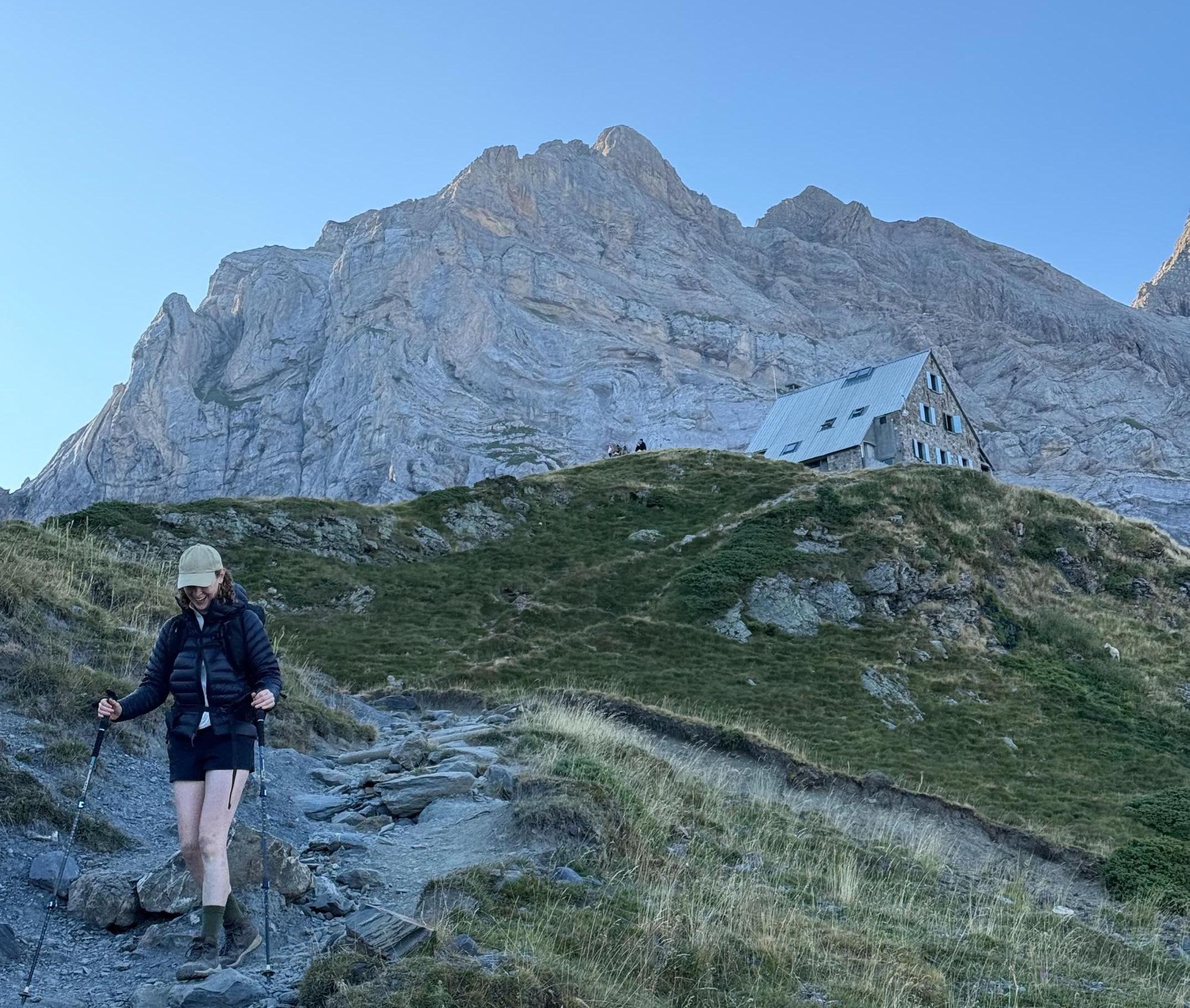When I first signed up to hike the High Route of the Lost through the wild Pyrenees, I wasn't entirely sure what to expect. Having lived in France until recently, I've previously spent a lot of time exploring the Alps, but the Pyrenees were more of an unknown to me. What I found was something far more rugged, remote and demanding than I'd imagined.
Birds of prey soared overhead, and wildflowers carpeted the lower slopes...
I saw more marmots than I've ever seen in the Alps - huge, unbothered by hikers, whistling across the valleys. Birds of prey soared overhead, and wildflowers carpeted the lower slopes; irises, scabious, and bursts of alpine colour.
Our guides Mai and Alberto pointed out the flora and fauna as we walked, turning each day into a natural history lesson. They kept our energy high on the long days and had us huddled around maps for evening briefings, checking out the mileage we'd covered each day and getting us ready for the steps still to come.
The route itself was intensely demanding. The High Route of the Lost is a 62-mile (100km) circuit weaving from Spain into France and then returning back again. All in all, it's eight days and seven nights of hiking through some of the most dramatic scenery in Europe. It turned out to be the hardest thing I’ve ever done physically - but also one of the most rewarding experiences of my life.

Here’s are my travel tips for walking the High Route of the Lost in the Pyrenees.
Don’t underestimate the Pyrenees
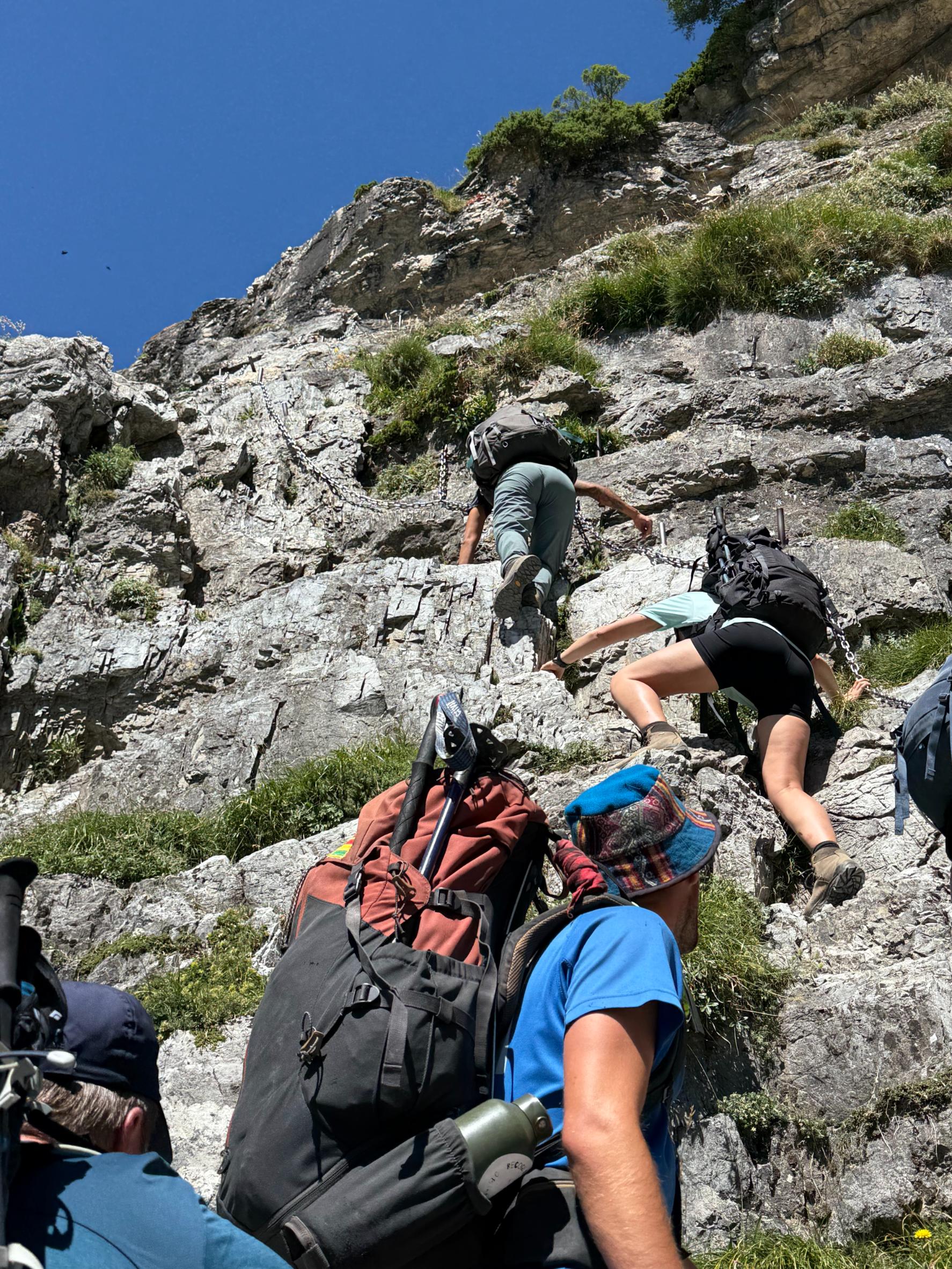
I’ve done plenty of hiking in the Alps, but while some who haven't visited might think of the Pyrenees as more gentle or tame, I actually found they felt much wilder. The paths were steeper, the trails rougher and the terrain more unpredictable. On some days, we walked for hours over loose scree. On others, we were scrambling up rock using chains for balance - trying not to look down.
If you’re expecting gentle alpine pastures, think again. The Pyrenees are raw and rugged. It's the kind of place that makes you feel small and alive all at once.
This route is not for the faint-hearted. It’s long, remote, and includes sections that will test your head for heights, with some exposed elements of trail having steep drops on one side. Even the fittest in our group had heavy legs by the end. I had trained beforehand, but in hindsight, I’d do more cardio and hill work.
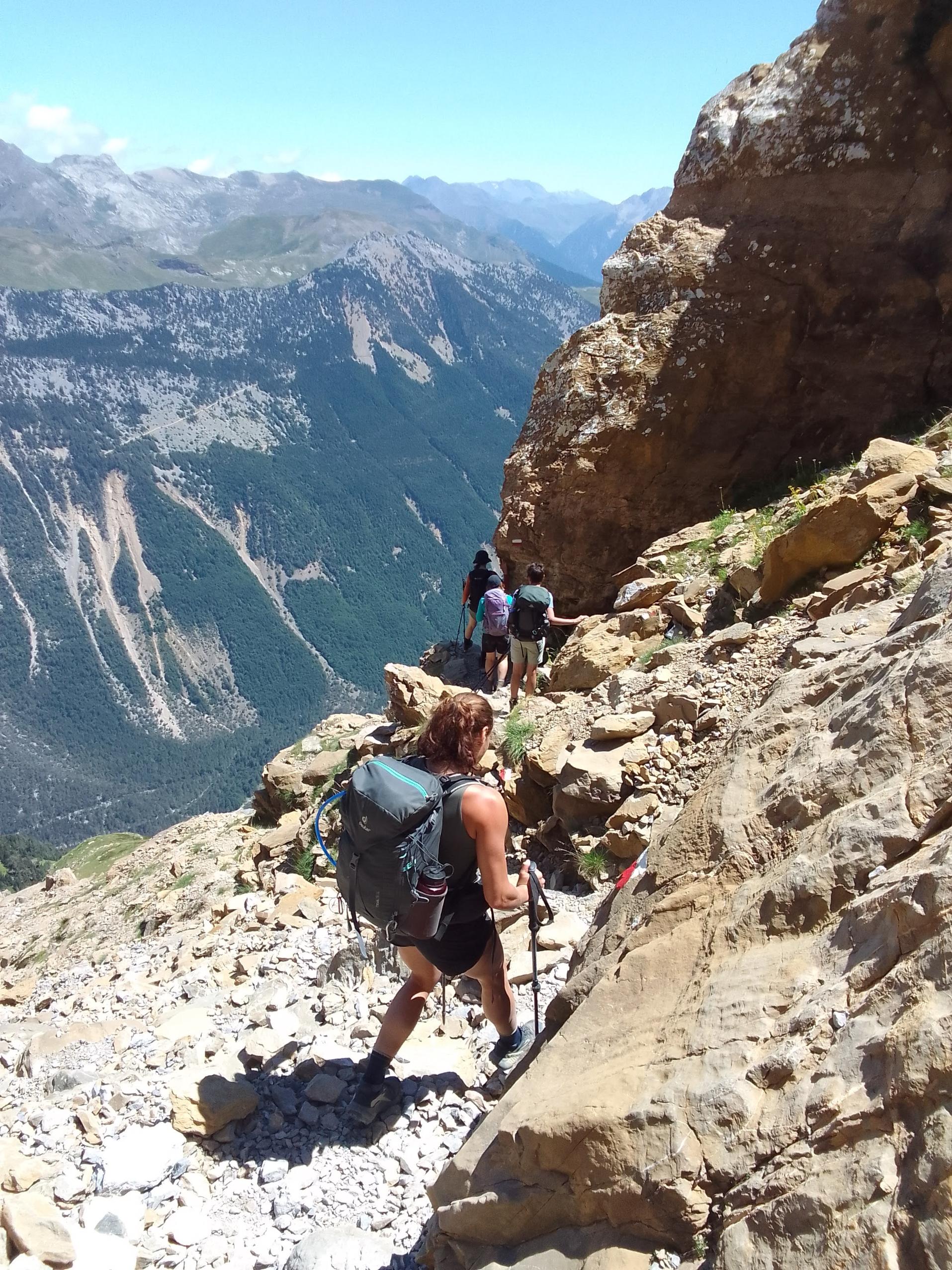
No one expects a lie-in on a hut-to-hut trek - but even so, 5.30am alarm clocks took getting used to. Don't expect a flat white to start your day in the Pyrenees. Being at altitude, the refuges haven't got fresh fruit and a yoghurt selection. Breakfasts were simple: strong coffee, bread and jam, then out onto the trail.
We hiked for around eight to ten hours a day, often taking just short breaks depending on the weather and terrain. That's a big effort. It’s demanding. But the rhythm becomes meditative - a steady beat of boots, breath, and mountain air.
Our guides told us early on that they’d assess after day two whether we could continue (everyone in our group was able to). This is not the kind of trek where you can go back on yourself or change your mind. Once you're on the track, you're on the track. It's remote and it would be difficult to opt out. But with challenge comes a particular type of reward. By the end of the trip, I was grinning ear to ear to have completed the route. Finishing it felt incredible.
The mountain refuges have real character
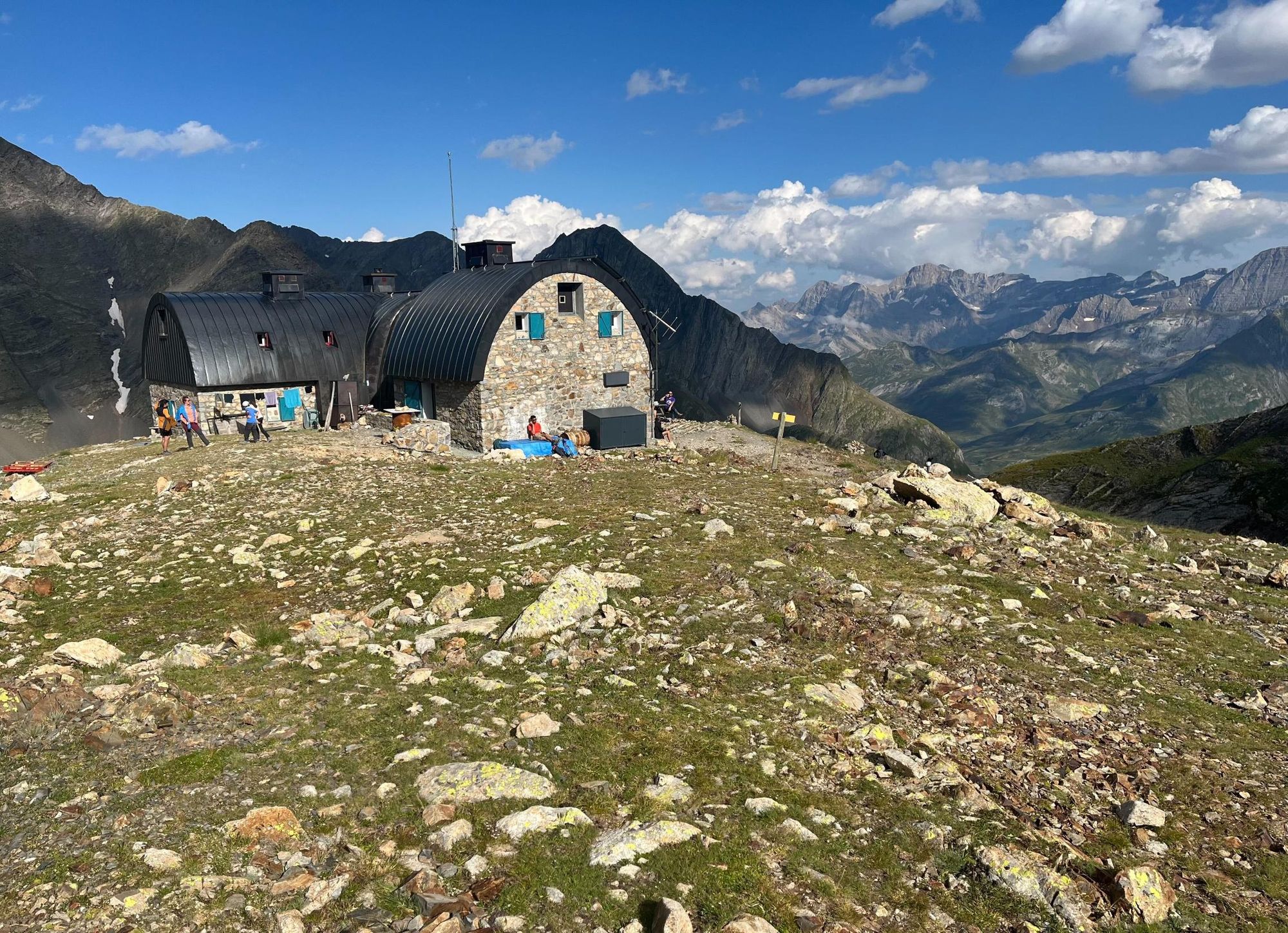
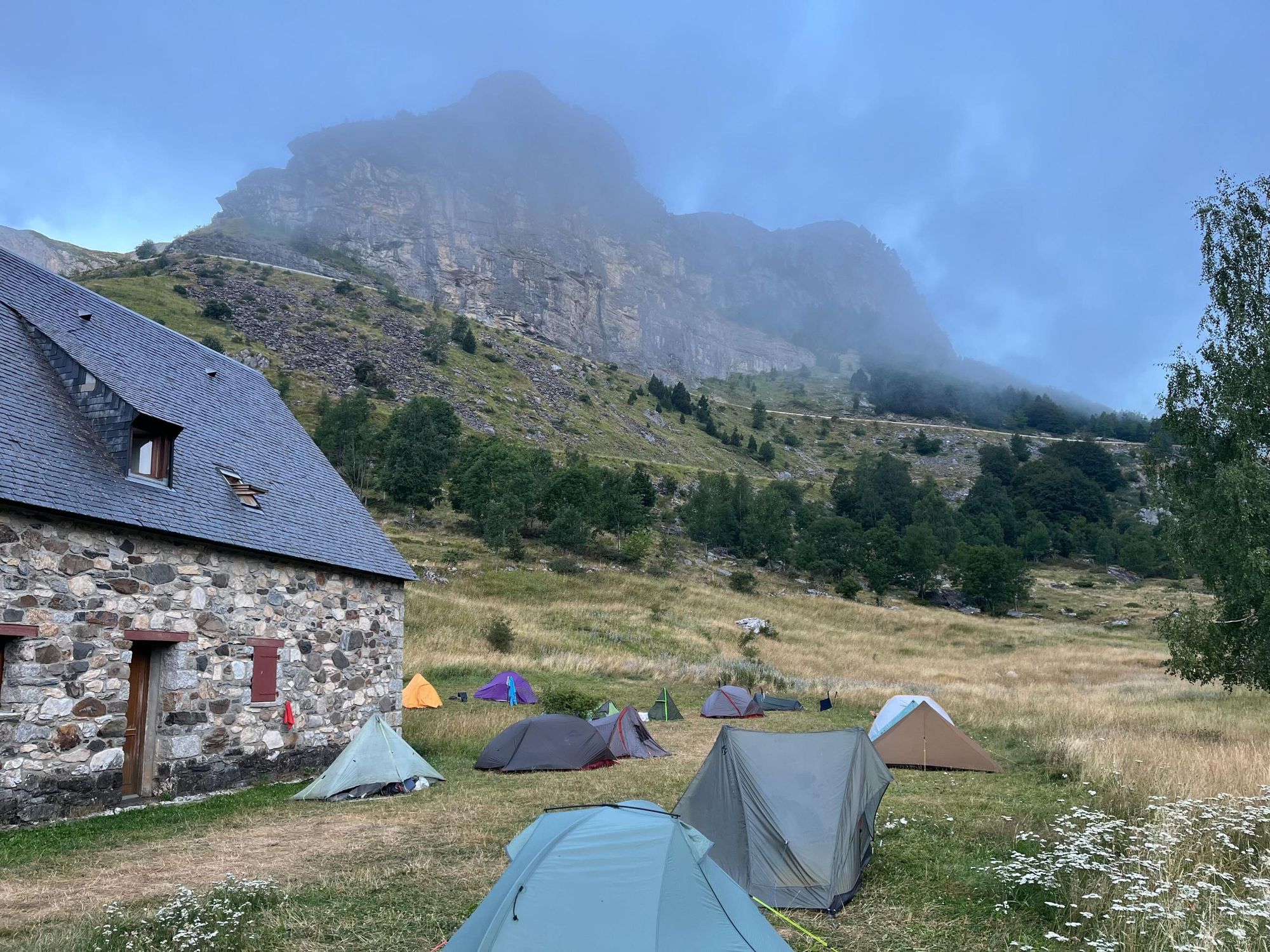
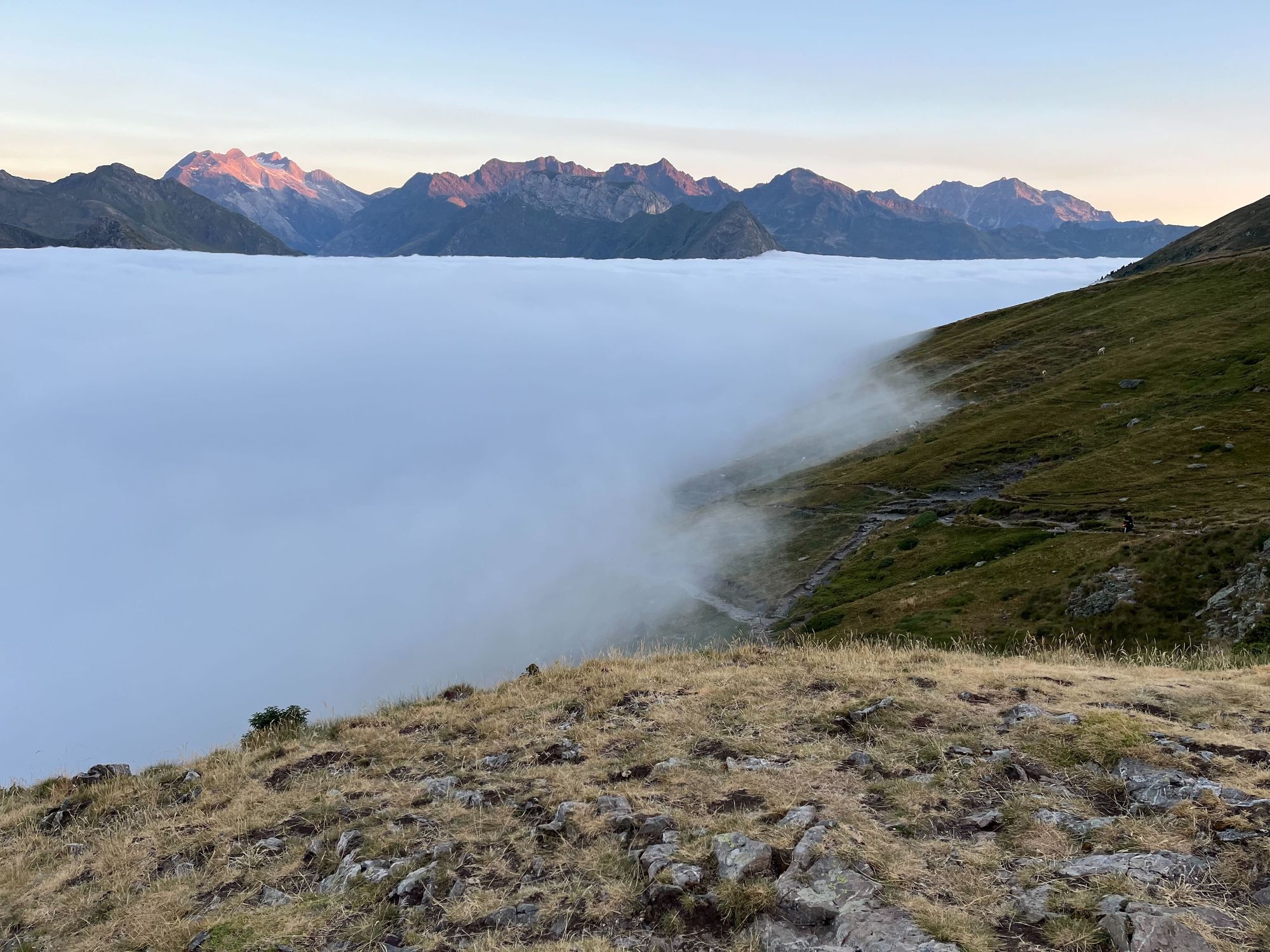
This was my first time staying in mountain refuges, which was really exciting. Each had its own personality - some more cosy than others in terms of sleeping arrangements. In some, you'd have your own single bed or bunk bed in a dorm, whereas in others you were almost shoulder to shoulder.
We started on the Spanish side and then crossed the border into France, where there was one refuge that everyone agreed was their favourite (and not just because of the homemade kombucha). It was called Refuge des Espuguettes, and it was a little mountain chalet-esque type of place. It was perched high among grazing cattle and goats with bells clanging in the distance. At over 2,000m (6,561ft), we’d sit outside watching a sea of clouds drift below us. It was magical.

After hiking up to the beautiful Gavarnie Falls (the highest waterfall in mainland France), we wound our way down to La Grange de Holle refuge outside Gavarnie, which was also a firm favourite. There was a waterfall beside the refuge where we went for an icy dip at the end of the day, and the hearty casserole we shared in the cosy dining room was delicious.
My tips? Bring earplugs, an eye mask, and embrace the communal charm. All of the refuges had Crocs, so you could ditch your hiking boots at the end of the day, or embrace the socks and velcro sandals look like I did.
The meals are hearty but simple
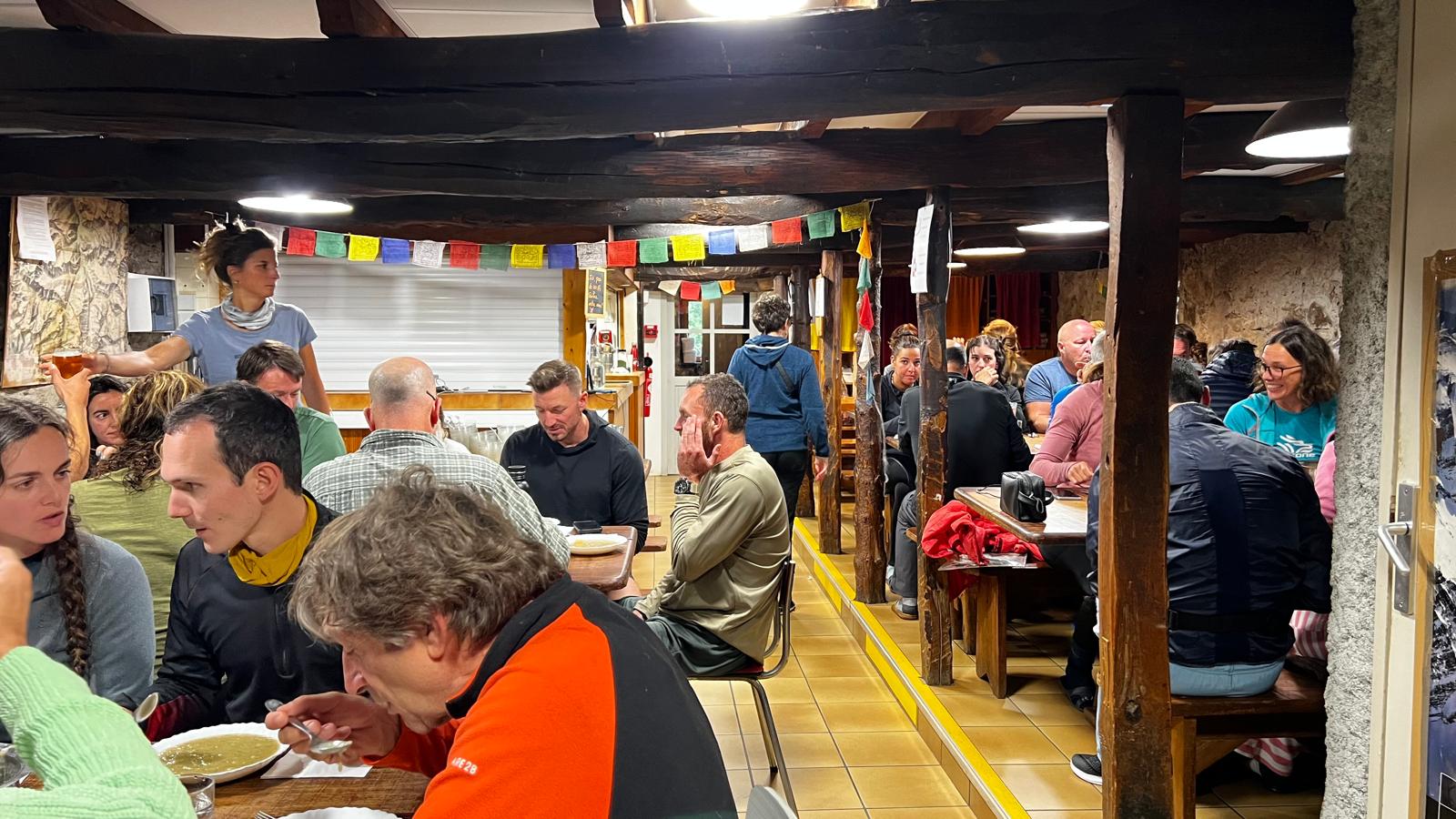
Meals tended to be basic but filling. Our dinner was normally three courses every night: soup, something hearty like beef or pork stew, pasta or polenta, and then usually some kind of dessert which everyone got very excited about, or a cheese offering. If you really were lucky, you'd get dessert and a cheese.
There were options for vegetarians and vegans too, but if you have dietary requirements like this, make sure you communicate them in advance to your host, so they can share this with the refuge. Everyone brought snacks to share, and by day three, trail mix, biscuits and broken chocolate bars were being passed around like treasure.
The digital disconnect is beautiful

My favourite thing about the mountain refuges was that they're both very peaceful and buzzing with life at the same time.
You get this incredible view when you get there, and there's something nice in knowing you've all had to hike to reach the hut. In the evenings, if you walk just a short distance away from the refuge and look back on it, you get a nice view of the building itself and you can just take in your surroundings. I loved doing that.
Without notifications or endless scrolling, you end up properly present: talking, laughing, playing cards after dinner, or standing outside under the stars.
But then when you walk back in, everyone is buzzing - excited at what they've done that day and what's to come. They're crowded round tables, enjoying a big meal or just catching up on the ups and downs of the day spent trekking.
One thing I also loved, which I didn't know would be the case, was that we went days without phone signal, especially at higher altitudes. At first, it felt strange - then, freeing. Without notifications or endless scrolling, you end up properly present: talking, laughing, playing cards after dinner, or standing outside under the stars. It leaves you feeling totally present in your surroundings.
The views are made better by the sense of achievement
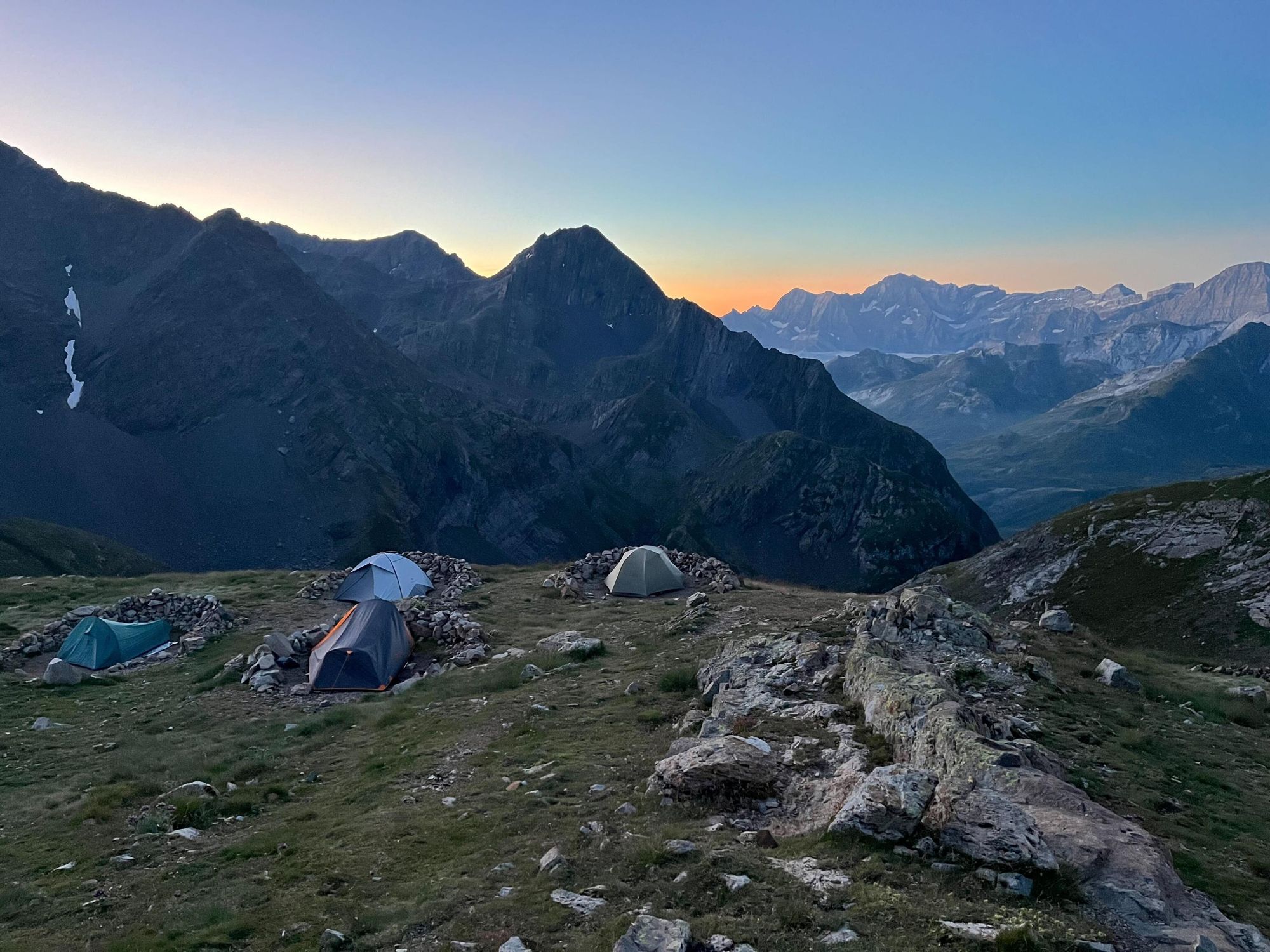
Two moments stay with me. The first: sunrise from Refuge Baysellance, the highest of the trip, when the mountains glowed pink against a sea of clouds on our final morning.
Up at 2,651m (8,697ft) Refuge Baysellance is a real climber's hideaway. As we were descending into the valley, there was a beautiful pink morning light on some of the peaks and we were walking down to this sea of clouds in the distance. The sense of achievement of having reached that high point, and knowing we were walking down to the finish was just such a lovely feeling.

The second was at Refuge des Espuguettes, where we fell asleep to cowbells jangling in the distance, beneath a sea of clouds. We were watching mountain goats appear and vanish in the mist, and in the distance, the great stone arch of La Brèche de Roland glowed in the evening light. Legend says the gap in the rock was carved in rage by a defeated warrior. It really was otherworldly.
Pack even lighter than you think!

A final thought is on the packing. I packed light - eight or nine kilograms - but I’d go even lighter still next time. I'd embrace the lightweight hikers mantras; take one or two of everything and rinse it each evening at the refuge. Leave the book at home (you won’t read it). Bring a pack of cards if you must - though most refuges already have them. Less to carry means more energy to enjoy the climb.
I finished the trek exhausted but euphoric - legs aching but my heart full. The Pyrenees pushed me further than I expected, and gifted me more back: silence, beauty, laughter, and the deep satisfaction that comes from earning every step.
Inspired? Walk the High Route of the Lost in the Pyrenees in 2026!

